 |
The Different Details of a Crawl Up the Oregon Coast
Published 11/02/2011
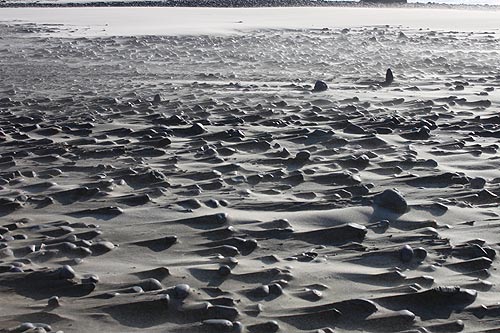
(Oregon Coast) – It's easy to wander up Highway 101 and spot the obvious, especially if you're a first-timer to this always-wowing way up the winding shoreline. But it's worth looking a little bit deeper, even if just for a second, and pay attention to a detail or two beyond the greater landscape.
If you begin at Florence – the halfway mark along the 365 miles of the Oregon coast – you'll discover Muriel O. Ponsler Wayside a tad north of town. Here, the sands can bundle together in degrees of dampness that create these tiny pointy structures when sculpted by the wind in just the right way.
Soon after this place, as you're heading northward, dramatic cliffs take you up and down in elevation with a consistently startling effect.
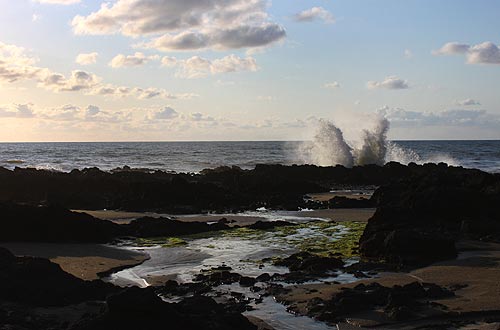
Among the wild discoveries include the marine gardens beneath Cape Perpetua, about ten miles from Ponsler. It's where Cook's Chasm spouts off in stunning fashion, but it's not the only insane bit of wave action. Numerous other spots along this rocky shelf get quite raucous as well.
Soon you'll come to Yachats, a glorious little village of myriad culinary, lodging and natural delights. It is typified by more rocky shelves that attract the full wallop of waves
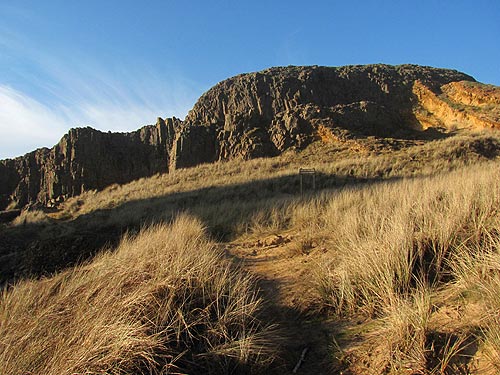
Continue north and you'll wander through more sandy stretches and the town of Waldport, until you come to the towering basalt structures of Seal Rock. Here, waves go bonkers against a labyrinth of black shapes and their jagged, even surreal outlines. Trails snake in and out of these areas and rise and fall with a grass-covered landscape that's surrounded by other kinds of cliffs and blobs, creating awe-inspiring, gold-dominated scenes like these.
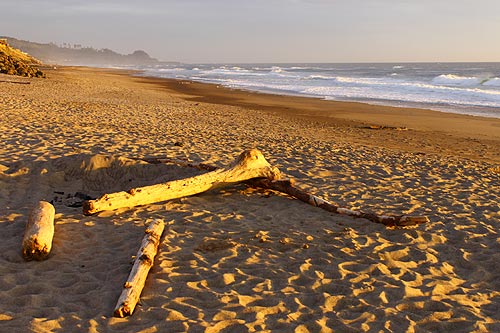
Within a few miles you enter the hotspot of Newport and then the quiet yet pleasure-packed village of Depoe Bay, with more of its dramatic rocky ledges. Another mile or two up the road and you hit Lincoln Beach and Gleneden Beach, where softer sands and strangely sloped tide lines create mesmerizing ways in which the waves conduct themselves.
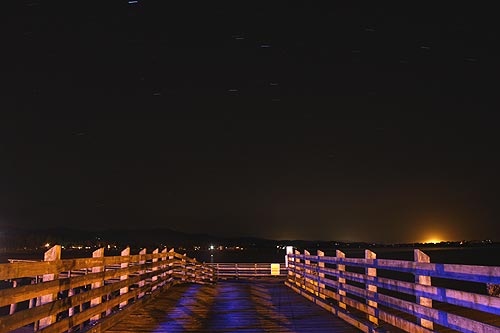
Less than ten miles up the road is the tourism mecca of Lincoln City, more than ten miles of beach and a highway packed with a huge array of ways to goof off, dine out or sleep the night in pampered bliss. One of its main attractions, Siletz Bay, is a particularly calming and relaxing spot. But check it out at night, and the pier here becomes this esoteric beauty lit up by nearby neon as the stars chase overhead.
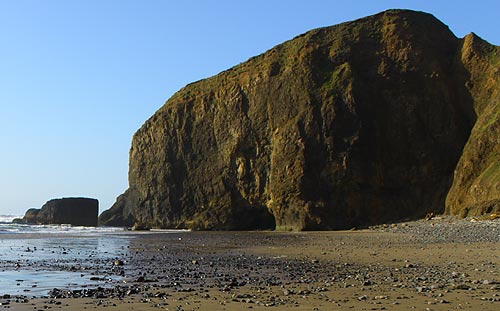
From here northward, you'll rise, fall and zip around the tight, winding hills on the highway that veers inland a bit, past the hypnotic yet sleepy village of Neskowin and onto the Three Capes Tour, which includes Pacific City, Cape Kiwanda and Cape Lookout. Then you'll come to the hidden burgh of Oceanside, which hides so much more to do than you can possibly imagine if you just swing into it quickly and take even a fairly long look around. You have to get out and start walking.
Among the striking delights is the beach on the other side of the tunnel going through Maxwell Point, where numerous little caves, rocky structures and other wonders lay around in vast abundance. Above is where this tiny beach dead-ends, with an astonishing pack of surprises lurking in little corners.
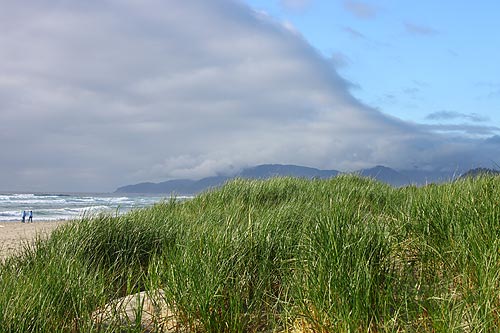
After Oceanside there's the Cape Meares lighthouse, and then you have to veer back inland for a bit along Tillamook Bay. Round this locale, zipping through Garibaldi and Bay City, and you'll soon come to peaceful, laid back Rockaway Beach. Seven miles of pristine sand stretch from near the mouth of the bay to the next one: Nehalem Bay. From Rockaway, you can see the landmark Neahkahnie Mountain looming over the sea in the distance.
North of Rockaway sit bayside burghs Nehalem and Wheeler, and then the beach appears again in impressive fashion with Manzanita, Oswald West State Park and curious Cannon Beach and Arch Cape. Seaside is next, with its long history of several generations of families having come here since the late 1800's.
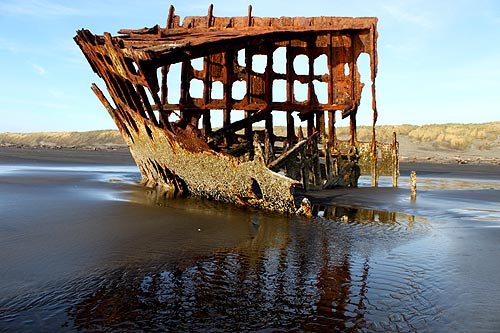
As you continue up Highway 101, the beaches get less and less populated, and then you come to the wonders of Fort Stevens State Park, where history resides in a multitude of attractions and living remnants. Among them is the wreck of the Peter Iredale, which has been here since the early 1900's. Much less of it is visible now, but it was in recent years used in a movie called “The Road,” and it is known as one of the world's most photographed shipwrecks.
More About Oregon Coast hotels, lodging.....
More About Oregon Coast Restaurants, Dining.....
LATEST Related Oregon Coast Articles
Decay Hits Beloved Oregon Coast Tree, Now the Newport Icon Must Be Cut Down |
Secrets of the Season |
Unusual Travel Articles TravelParanormal.com allows you to submit your own creepy tale or debunk one - or see up-to-the-minute news headlines about travel and the paranormal. News Headlines from All Over Oregon Need to scan Oregon headlines? Constantly updated news from all over Oregon: a comprehensive, up-to-the-minute display of news headlines from a variety of media Oregon Coast Oceanfront Lodging, Hotels, Rentals |
Back to Oregon Coast
Contact Advertise on BeachConnection.net
All Content, unless otherwise attributed, copyright BeachConnection.net Unauthorized use or publication is not permitted






































